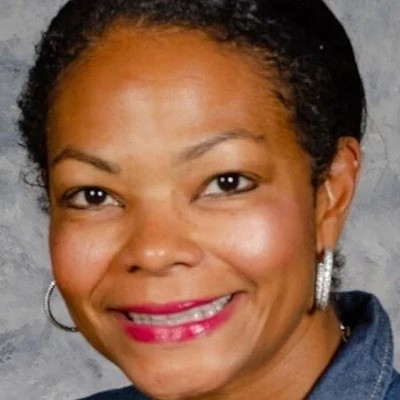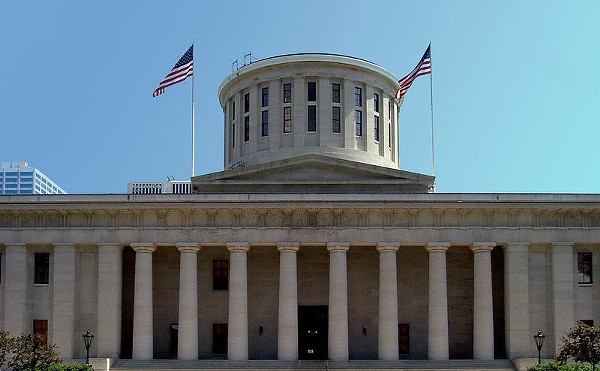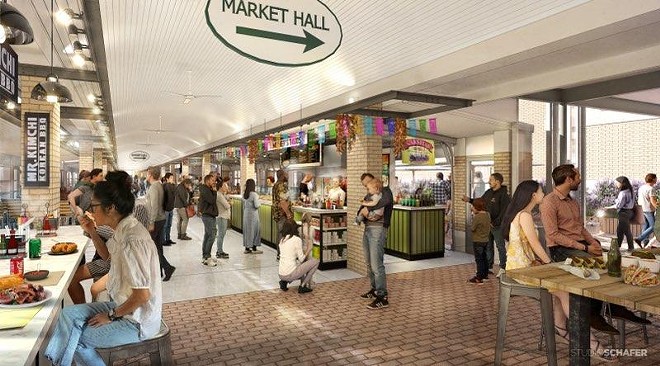
The renderings of what could be, shown to a packed crowd at Truss overlooking West 25th and Lorain, was serious eye candy for local residents, longtime vendors, and city officials.
Spearheaded by project leads Jessica Trivisonno and Ted Spitzer, the visuals depicted a West Side Market brought fittingly into the 21st century: A formerly-vacant "East Arcade" converted into a diverse, 12-stall food hall; an alleyway envisioned as seating area; lockerrooms converted to teaching kitchens; and more.
The only glaring caveat?
Paired with necessary building repairs, and nonprofit start-up fees, the price tag for the swanky makeover of Cleveland's market gem as designed would be roughly $44 million.
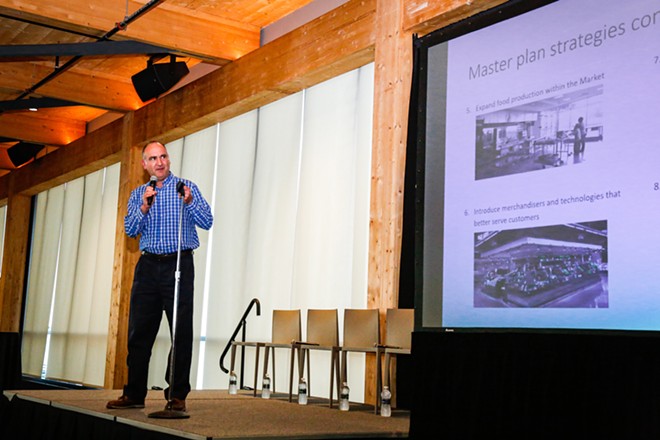
Save for the idealistic drawings—an actual balcony seating area with tables and chairs!—Spitzer presented what seems to be a practical methodology of getting both the market's decrepit basement fixed and buffing up its character. Spitzer's goal: to leverage the market's upcoming nonprofit management, and rent dollars from its East Arcade food hall, to turn the city gem into something it hasn't been for a long while — profitable.
As Trivisonno reported at Truss, the West Side Market is more of a city burden financially than a revenue-producing asset. It currently relies on a $700,000 annual subsidy from City Hall's Special Revenues Fund. Part of this is due, Trivisonno said, to the market being 32 percent vacant, a sign of the building's desperate need to modernize while keeping vendor rents affordable.

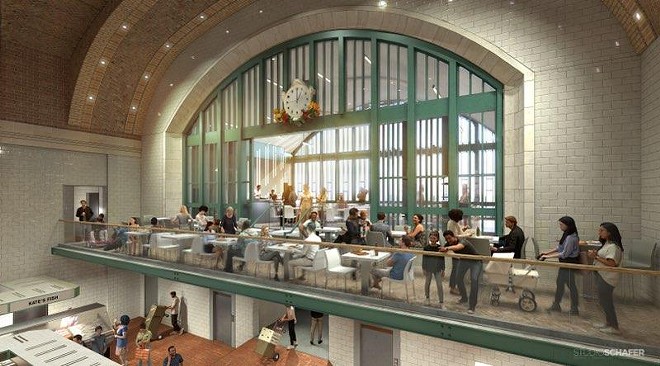

Such a gap between raising tens of millions of dollars and, as one vendor put it, "getting the building back to where it should be," is what prompted cycles of silences and woos and ahs Thursday evening. Spitzer, in a way, played the realist, showing how the city's commitment of $10 million in ARPA dollars (though not Bibb's hoped for $15 million) was a glass-half-full "fifth of the way there" head start in what could be a half decade-long process.
Once the market reaches nonprofit status, to be finalized by City Council in September, Spitzer said a whole wealth of revenue streams could open up to manage what will be a $32 million gap. Spitzer envisions "confidently" managing the vast parking lot with a Pay-By-Phone model; taking in dollars from cooking classes and lucrative wedding parties; and accepting what could be millions in donations and sponsors.
Before eyes grew too big, Spitzer urged patience. "We need the time to make the improvements, get the new cash flow," he said. "And then they can operate without any city subsidy."
Or, as Dave Abbott, the president of the CPMC vowed in the panel discussion afterwards: "We're gonna turn over every rock to find funding for this thing."
But the promises of matching the cool factor of Atlanta's Krog Street Market, or the colorful practicality of Cincinnati's Findlay Market (another Spritzer makeover), some worried, met worries that the market would change too much.
"I actually wonder how much of the integrity they'll keep," Olivia Kinczel, a local food advocate and pasta maker at Ohio City Pasta, told Scene on Truss' balcony overlooking Lorain Ave. She looked out to the market's facade. "I mean, obviously the outside will look the same. But some of those pictures look so modern that you almost can't recognize it."
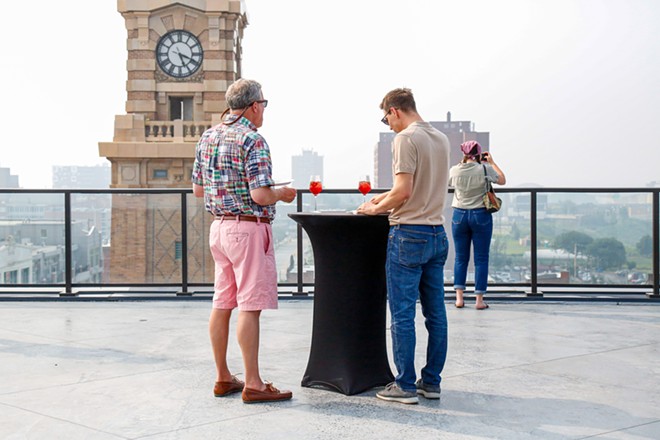
"We really want to keep the market authentic," she said. "We want to maintain all the characteristics we love: The fresh food, the multigenerational businesses. All of the things that make the market special."
Trivisonno said the market will most likely transfer to a new lease agreement by the end of July, and be approved by City Council in September. The final transition that makes the CPMC its landlords, she said, is slated to occur in January 2024.
Subscribe to Cleveland Scene newsletters.
Follow us: Apple News | Google News | NewsBreak | Reddit | Instagram | Facebook | Twitter | Or sign up for our RSS Feed



